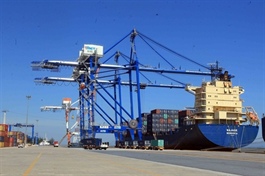Firms in supporting industries in dire need of skilled workers
Firms in supporting industries in dire need of skilled workers
Firms in supporting industries in Viet Nam are in desperate need of high-qualified and skilled workers in addition to solutions regarding capital and raw materials.

Staff at MBT Electrical Equipment JSC. — VNS Photo To Nhu |
Le Lam, Deputy General Director of MBT Electrical Equipment JSC in Ha Noi's Dan Phuong District, said his company faced many difficulties in the past two years due to the impact of the COVID-19 pandemic and disruption of the global supply chain, resulting in sharp declines in orders and revenue.
The company, which specialises in manufacturing transformers and medium-voltage cabinets, had been coping with dependence on imported raw materials as the quality of domestic products has failed to meet demand. Lam said his firm had also encountered difficulties in recruiting human resources to meet the requirements of its factory.
“We seek intermediate-level welding workers all year round, but could only recruit a few," Lam told Viet Nam News.
Although the market was facing difficulties, in the future, if exports increased, his firm would need abundant human resources. Therefore, Lam suggested the authorities draw up effective training policies for supporting industries.
Nguyen Hong Phong, Managing Director of An Mi Tools Co in the capital city agreed. He said his company which is involved in manufacturing high-precision products and mechanical components for enterprises in automobiles, motorcycles, aviation, space and moulds needed to recruit workers in the cutting and processing industries throughout the year.
However, personnel recruitment had caused his firm headaches because it was difficult for the local workforce to meet the recruitment demand of his company.
"Currently, we need to recruit between 30 and 50 new employees annually. But we can only meet about 30-40 per cent of our goal," Phong told Viet Nam News.
Furthermore, businesses had to spend a lot of time retraining recruited workers from the concept of operations in production to expertise as most of them lacked the necessary skills, he said.
“This is costly and time-consuming as it takes six months for workers to master their work, one year to have related skills and experience and they can be able to work independently only after two years,” he said.
Meanwhile, his firm has failed to collaborate continuously with educational facilities to train students or recruited workers.
Can supply meet demand?
According to Pham Xuan Khanh, Rector of the College of High Technology (HHT), HHT has established relationships with large enterprises in Viet Nam and in the world and they are willing to cooperate with HHT to build the training centres.
At these centres, businesses will invest in facilities and equipment, and bring good experts who can team up with HHT from developing and organising training programmes to assessing students. Businesses will later use this workforce for their business and production activities.
However, there are no specific guidelines governing businesses' investments in school facilities and the coordination between schools and businesses to build centres which specialise in training, research, production, and commercialisation of products, Khanh said.
Khanh said he hoped Ha Noi's authorities and the Ministry of Labour, Invalids and Social Affairs would soon remove these difficulties so that enterprises would be offered more favourable conditions in investing in the training area.
Sharing Khanh's opinion, Nguyen Van, Standing Vice Chairman of Ha Noi Supporting Industries Business Association (HANSIBA), said it was very important to remove bottlenecks in institutions and policies governing cooperation between businesses and universities, colleges and vocational training institutions. This would help facilitate cooperation between firms in supporting industries and educational institutions and the ultimate beneficiaries are students.
In the past, HANSIBA organised short-term training courses, bringing affiliates to visit training facilities. Through specific connection activities, HANSIBA had listened to both sides - schools and enterprises - thereby building connection programmes to meet demand and supply labour for each other.
This would be the shortest way in meeting the supply-demand of human resources for the supporting industries in the short term as well as in the long term, Van said.
To ensure the quality of human resources served for supporting industries, Van emphasised the importance of setting up technical standards on occupational skills according to international standards and focusing on training methods and certification systems so that Vietnamese labourers can work in regional and international markets.
Well-structured training plans and roadmaps for personnel resources served for supporting industries should be also included, he said.






















